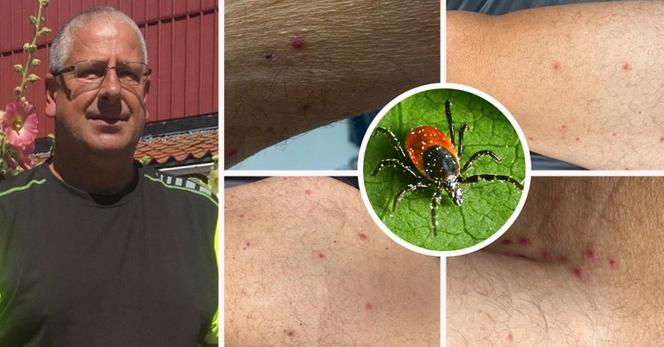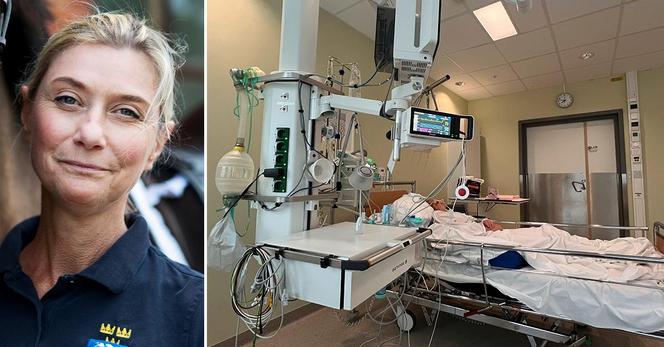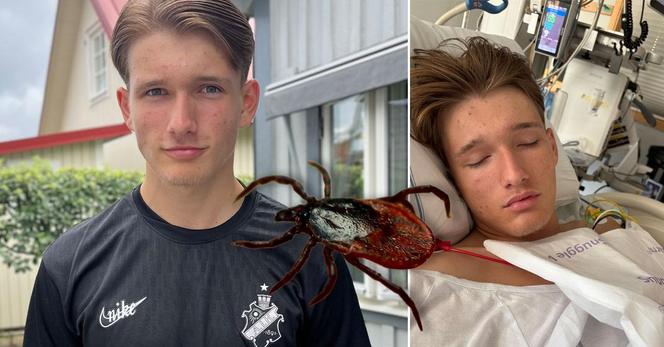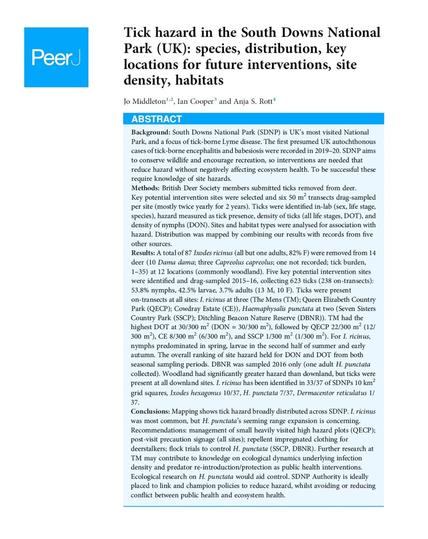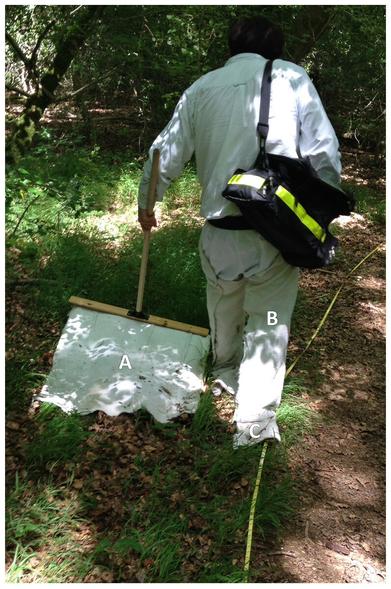Håkans mardrömsfynd – hittade 130 fästingar på kroppen
Håkans mardrömsfynd – hittade 130 fästingar på kroppen
Hon satt i gräset och njöt av hästtävlingarna på Strömsholm. Två dagar senare fördes hon akut till sjukhus med huvudvärk…
Hon satt i gräset och njöt av hästtävlingarna på Strömsholm. Två dagar senare fördes hon akut till sjukhus med huvudvärk och illamående. – Jag trodde att jag ha#tbe #flen #vaccin #fästingar
Irene fick TBE: Benen var som gelé
På midsommarafton börjar Noah plötsligt skaka i överkroppen – några timmar senare ligger han i koma…
På midsommarafton börjar Noah plötsligt skaka i överkroppen – några timmar senare ligger han i koma på intensivvårdsavdelningen i Stockholm. Han har fått TBE.#tbe #fästingar
Noah, 17, fick TBE – hamnade i koma
https://www.hbl.fi/2025-05-29/samir-28-fick-tbe-var-nara-att-do/
@woollypigs there's one thing you could add, I think. Here in Austria and other parts of Central Europe, ticks often transmit tick-borne #encephalitis (#TBE), a serious viral infection that among other things can lead to paralysis of the arms or legs and permanent disability. Once infected, there is not much you can do except treat the symptoms, but there is a preventive vaccine that most people in affected areas receive and that provides protection for some years.
https://www.ages.at/en/human/disease/pathogens-from-a-to-z/tbe
Paper by me (+ Cooper & Rott) on Tick hazard in the South Downs National Park (UK) + how to control without reducing ecosystem health. Free-to-read in @PeerJ at: https://peerj.com/articles/17483
Funders: @britishdeersoc , @BritishEcolSoc
ABSTRACT:
Background. #SouthDowns National Park (SDNP) is UK’s most visited #NationalPark, and a focus of tick-borne #Lymedisease. UK's first presumed locally acquired cases of #TBE and #babesiosis were recorded in 2019–20. The #SouthDownsNationalPark aims to conserve wildlife and encourage recreation, so interventions are needed that reduce hazard without negatively affecting ecosystem health. To be successful these require knowledge of site hazards.
Methods. British Deer Society members submitted ticks removed from deer. Key potential intervention sites were selected and six 50 m2 transects drag-sampled per site (mostly twice yearly for 2 years). #Ticks were identified in-lab (sex, life stage, species), hazard measured as tick presence, density of ticks (all life stages, DOT), and density of nymphs (DON). Sites and habitat types were analysed for association with hazard. Distribution was mapped by combining our results with records from five other sources.
Results. A total of 87 Ixodes ricinus (all but one adults, 82% F) were removed from 14 deer (10 Dama dama; three Capreolus capreolus; one not recorded; tick burden, 1–35) at 12 locations (commonly woodland). Five key potential intervention sites were identified and drag-sampled 2015–16, collecting 623 ticks (238 on-transects): 53.8% nymphs, 42.5% larvae, 3.7% adults (13 M, 10 F). Ticks were present on-transects at all sites: I. ricinus at three (The Mens (TM); Queen Elizabeth Country Park (QECP); Cowdray Estate (CE)), Haemaphysalis punctata at two (Seven Sisters Country Park (SSCP); Ditchling Beacon Nature Reserve (DBNR)). TM had the highest DOT at 30/300 m2 (DON = 30/300 m2), followed by QECP 22/300 m2 (12/300 m2), CE 8/300 m2 (6/300 m2), and SSCP 1/300 m2 (1/300 m2). For I. ricinus, nymphs predominated in spring, larvae in the second half of summer and early autumn. The overall ranking of site hazard held for DON and DOT from both seasonal sampling periods. DBNR was sampled 2016 only (one adult H. punctata collected). Woodland had significantly greater hazard than downland, but ticks were present at all downland sites. I. ricinus has been identified in 33/37 of SDNPs 10 km2 grid squares, Ixodes hexagonus 10/37, H. punctata 7/37, Dermacentor reticulatus 1/37.
Conclusions. Mapping shows tick hazard broadly distributed across SDNP. I. ricinus was most common, but H. punctata’s seeming range expansion is concerning. Recommendations: management of small heavily visited high hazard plots (QECP); post-visit precaution signage (all sites); repellent impregnated clothing for deerstalkers; flock trials to control H. punctata (SSCP, DBNR). Further research at TM may contribute to knowledge on ecological dynamics underlying infection density and predator re-introduction/protection as public health interventions. #EcologicalResearch on H. punctata would aid control. SDNP Authority is ideally placed to link and champion policies to reduce hazard, whilst avoiding or reducing conflict between public health and ecosystem health.
#OneHealth #PlanetaryHealth #TickAware #DiseaseEcology #ConservationBiology #Acarology #MedicalEntomology #parasites #parasitology #lymedisease
Tick hazard in the South Downs National Park (UK): species, distribution, key locations for future interventions, site density, habitats
Background South Downs National Park (SDNP) is UK’s most visited National Park, and a focus of tick-borne Lyme disease. The first presumed UK autochthonous cases of tick-borne encephalitis and babesiosis were recorded in 2019–20. SDNP aims to conserve wildlife and encourage recreation, so interventions are needed that reduce hazard without negatively affecting ecosystem health. To be successful these require knowledge of site hazards. Methods British Deer Society members submitted ticks removed from deer. Key potential intervention sites were selected and six 50 m2 transects drag-sampled per site (mostly twice yearly for 2 years). Ticks were identified in-lab (sex, life stage, species), hazard measured as tick presence, density of ticks (all life stages, DOT), and density of nymphs (DON). Sites and habitat types were analysed for association with hazard. Distribution was mapped by combining our results with records from five other sources. Results A total of 87 Ixodes ricinus (all but one adults, 82% F) were removed from 14 deer (10 Dama dama; three Capreolus capreolus; one not recorded; tick burden, 1–35) at 12 locations (commonly woodland). Five key potential intervention sites were identified and drag-sampled 2015–16, collecting 623 ticks (238 on-transects): 53.8% nymphs, 42.5% larvae, 3.7% adults (13 M, 10 F). Ticks were present on-transects at all sites: I. ricinus at three (The Mens (TM); Queen Elizabeth Country Park (QECP); Cowdray Estate (CE)), Haemaphysalis punctata at two (Seven Sisters Country Park (SSCP); Ditchling Beacon Nature Reserve (DBNR)). TM had the highest DOT at 30/300 m2 (DON = 30/300 m2), followed by QECP 22/300 m2 (12/300 m2), CE 8/300 m2 (6/300 m2), and SSCP 1/300 m2 (1/300 m2). For I. ricinus, nymphs predominated in spring, larvae in the second half of summer and early autumn. The overall ranking of site hazard held for DON and DOT from both seasonal sampling periods. DBNR was sampled 2016 only (one adult H. punctata collected). Woodland had significantly greater hazard than downland, but ticks were present at all downland sites. I. ricinus has been identified in 33/37 of SDNPs 10 km2 grid squares, Ixodes hexagonus 10/37, H. punctata 7/37, Dermacentor reticulatus 1/37. Conclusions Mapping shows tick hazard broadly distributed across SDNP. I. ricinus was most common, but H. punctata’s seeming range expansion is concerning. Recommendations: management of small heavily visited high hazard plots (QECP); post-visit precaution signage (all sites); repellent impregnated clothing for deerstalkers; flock trials to control H. punctata (SSCP, DBNR). Further research at TM may contribute to knowledge on ecological dynamics underlying infection density and predator re-introduction/protection as public health interventions. Ecological research on H. punctata would aid control. SDNP Authority is ideally placed to link and champion policies to reduce hazard, whilst avoiding or reducing conflict between public health and ecosystem health.
Elätän edelleen toivetta, että ensi kesänä pystyisi melomaan. Koska liikun Saaristomeren puolella, ja matkaa mantereen pahimpaan TBE-keskukseen Paraisille on parin tunnin melonta, niin yritin selvittää saanko sen terveyskeskuksesta ja mihin hintaan.
Ainoa mikä selvisi on se minkä tiesin: se on maksullinen. Mutta ilmeisesti ei saa ja on mentävä yksityiselle puolelle.
Taitaa jäädä hoitamatta. Plus olen taas myöhässä ensi kesää ajatellen.
#ziektevanlyme #tbe #tekenbeetziekten
R to @ECDC_EU: #TBE is one of the most common tick-borne illnesses and can cause fever, aches, and fatigue. In some cases, it can cause serious complications such as paralysis or inflammation of the brain.
A vaccine to prevent TBE is available and is an effective means of prevention.
[2024-06-20 15:38 UTC]
(geändert) #TBE: Störung: Witterungsbedingte Einflüsse - Extreme Witterung
Diese Meldung wird aufgrund der Datenmigration zum neuen BZ-Info temporär geschlossen. In wenigen Minuten wird die Störung erneut als Erstmeldung im neuen System an Sie versendet.
*****
Stützmauer am Gleis Walheim - Bietigheim Bissingen eingestürzt.
Züge verkehren im Gegengleis.
Ende: 2024-06-19 11:58
Quelle: strecken.info
